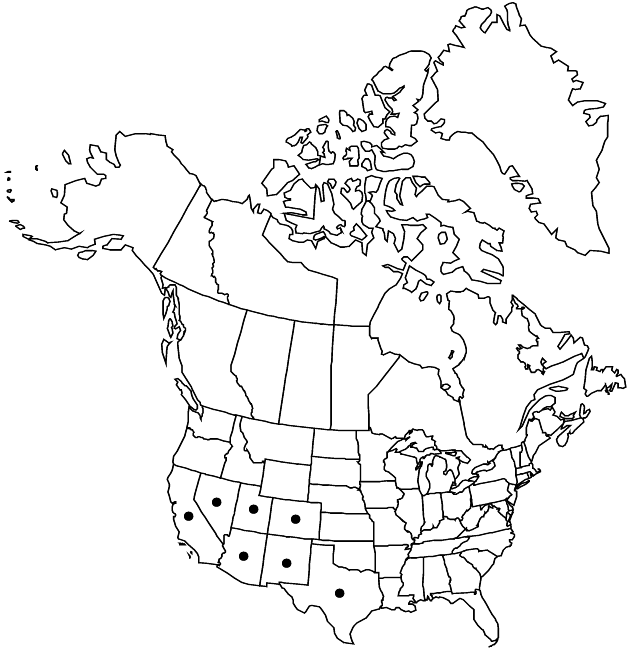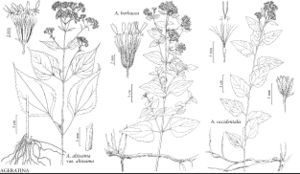Ageratina herbacea
Phytologia 19: 222. 1970.
Perennials or subshrubs, (20–)30–60(–80) cm (woody crowns and woody rhizomes). Stems erect (brittle), minutely puberulent. Leaves opposite; petioles 10–25 mm; blades triangular to lanceolate-ovate or ovate, 2–5(–7) × 1.5–3.5(–4.5) cm, bases truncate to shallowly cordate, margins dentate to serrate-dentate, abaxial faces sparsely hispidulous to glabrate, eglandular. Heads clustered. Peduncles 4–15 mm, puberulent. Involucres 4–5 mm. Phyllaries: apices acute, abaxial faces granular-puberulent. Corollas white, glabrous. Cypselae finely strigose-hispidulous. 2n = 34.
Phenology: Flowering (Jul–)Aug–Oct.
Habitat: Pine, pine-oak, juniper, and pinyon-juniper woodlands, rocks along streams, slopes, ridges, washes
Elevation: 1400–2700(–2900) m
Distribution

Ariz., Calif., Colo., Nev., N.Mex., Tex., Utah, Mexico (Baja California, Chihuahua, Coahuila, Sonora).
Discussion
Ageratina herbacea is recognized by the distinctive color of its usually yellow-green, sometimes grayish, leaves, granular-puberulent involucres (with minute, thickened, eglandular hairs), and woody rhizomes.
Selected References
None.
